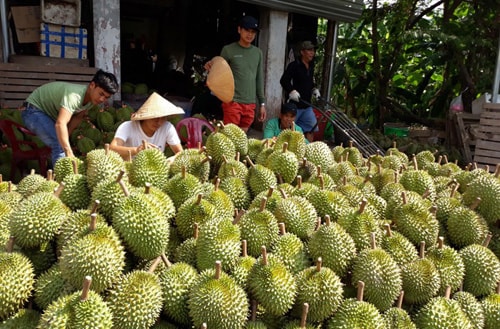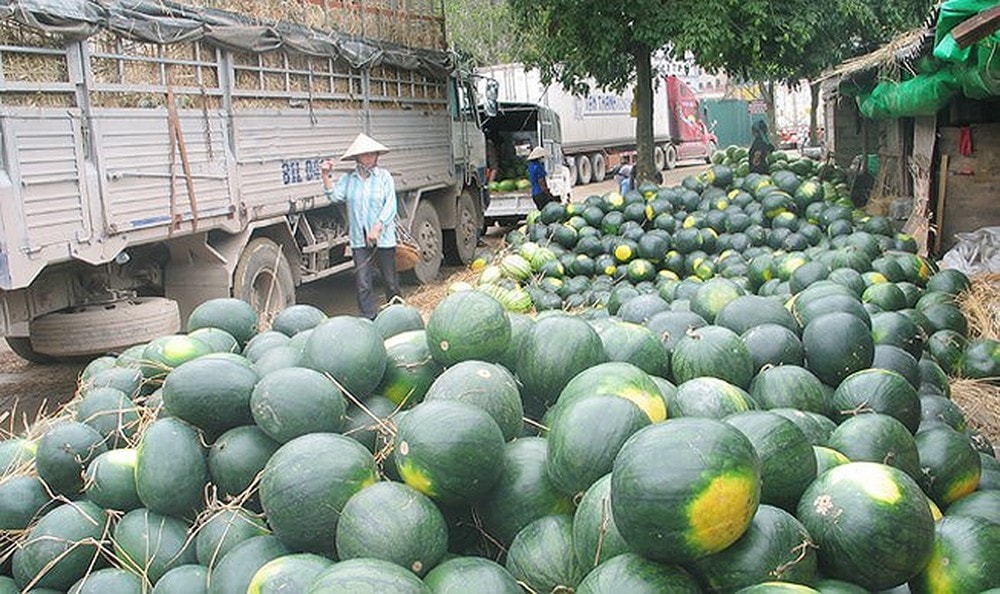7 more Vietnamese fruits and vegetables are opened to China
The information that the General Administration of Customs of China (China) has agreed to consider opening the market to 7 more types of Vietnamese fruits and agricultural products is attracting the attention of many farmers. The question is how we can ensure that Vietnamese fruits and agricultural products can properly and officially enter this billion-people market.
Main markets for Vietnamese agricultural products
At the recent Vietnam - China Agricultural Export Enterprises Seminar, Deputy Minister of Agriculture and Rural Development Tran Thanh Nam announced that the General Department of Customs of China has agreed to consider opening the import of some more types of Vietnamese fruits after the 8 types of fruits that have been licensed for official export (including dragon fruit, watermelon, mango, longan, lychee, jackfruit, banana, rambutan).
Specifically, the priority order of fruits and vegetables that will soon be officially imported by China is durian, grapefruit, passion fruit, sweet potato, coconut, custard apple, and mangosteen. Of these, durian is the fruit that is favored by Chinese consumers, so it will be given priority to be opened first.
 |
| Many people are happy with the news that China is about to open its doors to durian because previously there were many concerns about the "broken" planning situation when the area planted with this tree increased rapidly. |
In particular, China also approved 13 Vietnamese enterprises to export seafood to this country and added tuna and tilapia to the list of imports from Vietnam. In addition, to facilitate businesses to reduce costs and avoid congestion, China agreed to open additional seafood export functions at border gates designated by the two countries.
According to Deputy Minister Tran Thanh Nam, China is the main export market for many types of Vietnamese agricultural products. Through cooperation agreements between the leaders of the two governments, China and Vietnam will continue to promote the export of agricultural products of Vietnam's strengths that China has high demand for, such as fruits, seafood, rice, wheat flour, rubber, etc.
If in the past China was considered a fairly easy-going export market, now this country is increasingly demanding in terms of product quality, traceability, clear packaging and labels, and prioritizing imports through official channels.
By June 2019, all Vietnamese agricultural products officially exported to China must meet the above conditions. Therefore, Vietnamese enterprises wishing to boost exports to China need to quickly change production direction, invest in improving product quality, and clearly understand market demand to orient production appropriately.
 |
| China is increasingly demanding high product quality, traceability, clear packaging and labeling, and prioritizing official imports. |
Mr. Nguyen Quoc Manh - Head of the Department of Industrial Crops - Fruit Trees (Department of Crop Production, Ministry of Agriculture and Rural Development) said that by the end of 2017, the total area of durian trees in the country was 36,145 hectares, the harvested area was about 27,390 hectares, the average yield was 14.6 tons/ha, the output was 402,000 tons. Meanwhile, in 2016, the total area of durian trees was 33,400 hectares, the average yield was 15 tons/ha, the output was 399,000 tons.
In recent years, especially in the past two years, durian prices have been much higher than the average of previous years, leading to a large increase in the area of durian cultivation among the people, while this is a perennial crop.
“Compared to current demand, the total area of durian is not too large, however, the consumption of this fruit is heavily dependent on the Chinese market; the domestic market is not growing much (only about 30%). Meanwhile, we have not grasped the demand from the Chinese market, do not know how much they will buy, what the price will be... Not only durian but for any fruit, if it develops too quickly, when the market has problems, consumption will immediately encounter difficulties" - Mr. Manh said.
For example, in Tien Giang, last year farmers in this province produced more than 200,000 tons of durian, but up to 70% of it was exported fresh through unofficial channels to China. This is the reason why the price of this fruit is always fluctuating, the product value is not high, farmers are not proactive in production, and are not confident with the type of tree they grow.
Seize the "golden" opportunity
Also in the discussion, Mr. Ly Kien Luong, representative of the Chinese Consulate in Ho Chi Minh City, commented that due to similarities in culture and consumer demand, most products produced in Vietnam can be exported to China. The potential for trade cooperation between Vietnam and China for agricultural products is still very large. Although it is a market with large consumer demand, the consumption trends of Chinese people are changing rapidly.
Typically, with rice, in 2017, China imported 2.2 million tons from Vietnam but in 2018 this number stopped at 1.3 million tons. The reason is that the demand for rice of Chinese people has changed towards increasing the use of high-quality rice products.
Therefore, instead of just aiming for quantity, Vietnamese enterprises should promote the export of high-quality and high-value products that can meet market demand in the long term.
Meanwhile, Mr. Huynh Quan - General Director of Liaoning Province Agricultural Products Distribution and Consumption Group (China) informed that China is a large-scale market with more than 1.4 billion people. On average, each year China imports 6 million tons of rice, 13 million tons of wheat starch and many other agricultural products and fruits.
The climates of Vietnam and China are different. While most of Vietnam has a hot and humid climate, many regions of China have cold winters, so Vietnamese and Chinese agricultural products can complement each other very well.
In particular, Chinese consumers appreciate that Vietnamese agricultural products and fruits are rich, delicious and have quite competitive prices. This is an advantage and opportunity for Vietnamese enterprises to boost exports to this market.
On the Vietnamese side, it is necessary to promote branding for agricultural products because currently the top priority of Chinese import enterprises is not price but product quality and packaging with full information.
